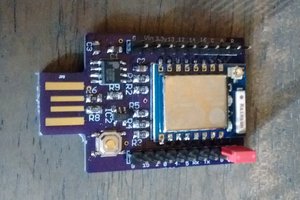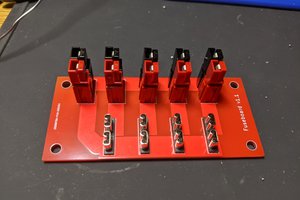Parral dev board is available on Kickstarter now!!
WHO IS PARRAL DEV BOARD FOR?
Parral dev board is for everyone who loves making awesome stuff. We envision a platform and community where people with different skill levels can channel their creativity into reality whether, It is a do-it-yourself platform project, a startup idea or an educational tool for your kids. We believe that despite having different goals and levels of expertise, you all share our love for building.

DESCRIPTION
- Removable P8X32A 8-core 32 bits microcontroller system with 512KB EEPROM and 5 MHz oscillator.
- Micro-B USB connector for powering, programming, and communication
- Open source BlocklyProp, C, Spin, and assembly language programming tools
- Additional LEDs indicate power and TX/RX communication
- Tiny edge-mounted reset button to restart the microcontrolle without disconnecting
- Safety 500ma Fuse
- Two Tiny edge-mounted built-in, user-programmable Buttons
- Two built-in, user-programmable LEDs
- 3.3v/5v selectable Power Supply
- Protoboard friendly design

PARRAL DEV BOAD PINOUT
Parral dev board is available on Kickstarter now!!
https://www.kickstarter.com/projects/1424716448/parral-dev-board
 Daniel Garcia
Daniel Garcia


 piat.jonathan
piat.jonathan
 Jared Young
Jared Young
 Nikolaj Andersson Nielsen
Nikolaj Andersson Nielsen
 Adam Demuri
Adam Demuri
Some of the contemporary Propeller software already requires a 64 kbytes EEPROM. Having the Propeller on a socket to be available for breadboarding is a nice idea. Doing the same with the EEPROM would make sense and the EEPROM being the only part of the board that can wear out, having it socketed would make double sense. For the quartz, the capacitors and the I2C pullups, just include a set of them in a bag with your kit.
Having the quartz on the devboard removable would be nice too for swapping in other "speeds". Disabling the onboard quartz by jumpers and adding the other quartz on the breadboard would be equivalent.
Fixed onboard peripherals may come in your way. I prefer not to have switches and LEDs onboard. Adding LEDs and switches for playing with them on the breadboard probably is not too complicated for beginners.
And in contrast to the comments in the Parallax forum, I don't like micro USB. They are too fragile. Mini is better, fullsize may be overkill today. But the USB2 world seems to converge on micro USB and I will not be able to stop that.. :-(